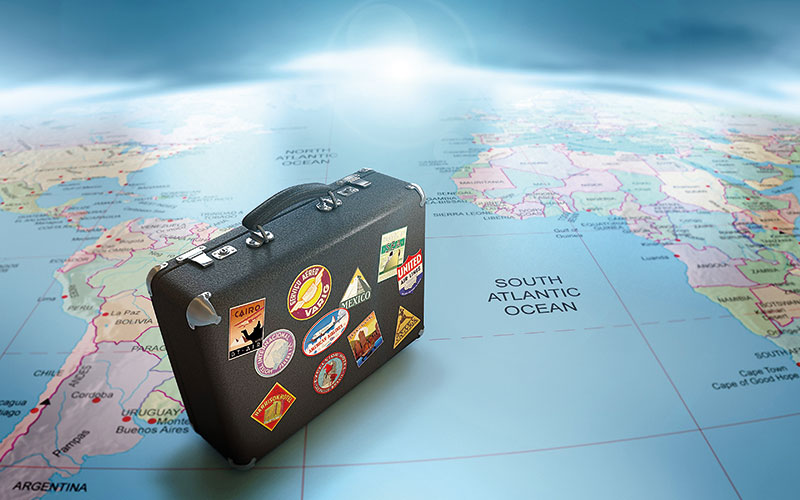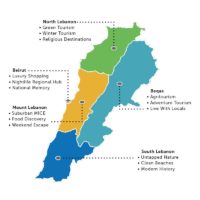When well maintained and developed, the tourism sector can elevate any destination, helping it to acquire world-renowned status, attract millions of visitors each year and generate billions of dollars in income. Ralph Nader, CEO of Amber Consulting, shows us what’s behind the ‘vision’
Experts agree that tourism is one of the largest revenue-generating industries worldwide and the fastest growing industry in the world when it comes to safeguarding a sustainable future. Today, tourism accounts for 7 percent of developing countries’ total exports and as much as 45 percent of their commercial services exports.
Winners and others
However, research has shown that if not properly managed, tourism can have a broader detrimental effect. So how have some destinations managed to become key players in this industry, while others remain in the shadows, despite their rich assets?
What is a tourism plan?
Tourism planning is a tool for destination area development and a means for assessing the needs of a tourist-receiving market, where the primary areas of focus are generating income and employment, and ensuring resource conservation and visitor satisfaction. In order to design a successful development plan, it is necessary to have a clear understanding of the objectives at local, regional and/or national levels.
Getting it right
Many countries that were pioneers of this concept realized the importance of setting a clear, targeted and effective tourism plan and implementing strategies with a solid vision for sustainable tourism development.
Focus on the fundamentals: develop a tourism strategy that is sustainable and focuses on the destination’s strong fundamental assets and unique products to differentiate it from neighboring countries. In other words, focus on promoting and developing the competitive advantages or the core tourism offerings of a destination, whether for the cultural and heritage, beach/leisure, sports activities, religious and historical sites, or corporate and MICE segments.
Targeted strategy: design a strategy for the future that has distinct objectives, accurate target markets and clear positioning for each state.
• Clear and measurable objectives: quantitative objectives should be developed to ensure that the success of the tourism strategy is measurable and can be monitored. For example, Dubai’s Tourism Vision for 2020 has a key objective of attracting 20 million visitors per year by 2020.
• Accurate target market: identify target segments to prioritize. Also, develop an in-depth understanding of travelers’ behaviors, needs and the latest trends, by pinpointing the following:
– The value proposition to promote: why visit the destination?
-The type of products to showcase
-The distribution channel attributes (for example, tour operator packages)
-The key marketing messages and reach (for example, social media)
-The required changes to connectivity
-The key barriers to address
After identifying its top source markets, Singapore tailored and customized YourSingapore campaigns specifically for each country, creating an individual set of taglines, key visuals and messages.
• Clear positioning for each state: in order to avoid cannibalism, a smart tourism plan should have a clear and differentiated positioning for each region, based on its specific fundamental assets and strengths.
Enablers and supporting stakeholders
Bringing stakeholders on board through involvement and collaboration is another important factor that can help a tourism plan achieve success. These include public bodies, the private sector and land owners, alongside a broad range of other key players. The strategy should be as inclusive as possible, with input from across the professional spectrum in segments such as:
• Government agencies
• Educational institutions
• Human capital
• Industry associations
• International transportation
• Local transportation
• Marketing & public relations
• Healthcare infrastructure
• Telecommunication
• Security
• Financial infrastructure
• Tour operators
Action plans relating to the government agencies should include optimizing the public sector tourism structure, improving public-private collaboration and creating a ‘Tourism Observatory’. When it comes to human capital, the areas of focus should encompass improving on-the-job training, extending international educational partnerships, developing state education, improving language skills and regulating informal labor.
A final touch
Developing a tourism plan is the first step toward driving your destination onto the international tourism scene. However, plans have little value if they are not effectively implemented. Thus, implementation techniques must be identified, such as organizing a national tourism conference to launch the plan. Such strategies can help to increase networking among key stakeholders, spread knowledge among the community and boost its participation, while also attracting local and foreign investment.
Staying up to date
The tourism sector is an ideal platform for developing smart city solutions. With the aim of improving the tourist experience, which is now regarded as an essential element of the overall offering, many countries have recognized the positive impact of developing a smart tourism hub.
Collecting data: compiling information on every type of activity that takes place at the destination, collected from all possible sources of data.
Analyzing it: by using various intelligent systems to identify tourists’ behaviors, measures can be proposed with a view to improving both the management of the destination and customer satisfaction.
Implementing measures: this includes analysis of economic, technical and financial feasibility that will enhance the destination, making it more sustainable and adaptable to the needs of tourists, while allowing them to customize their experiences.
Understanding demand
A common error is for destinations to develop a tourism plan, but fail to complete the full process and implement their findings effectively. Achieving a successful tourism plan requires a key step early on in the process, which is assessing, studying and analyzing demand. This should include both the present and latent demand, namely, the segments that are not currently target markets, but could potentially be attracted to the destination in the long run. Therefore, understanding demand and identifying all its characteristics will allow the destination to have a clear vision, a focused approach and the means to optimize a tourism budget.























